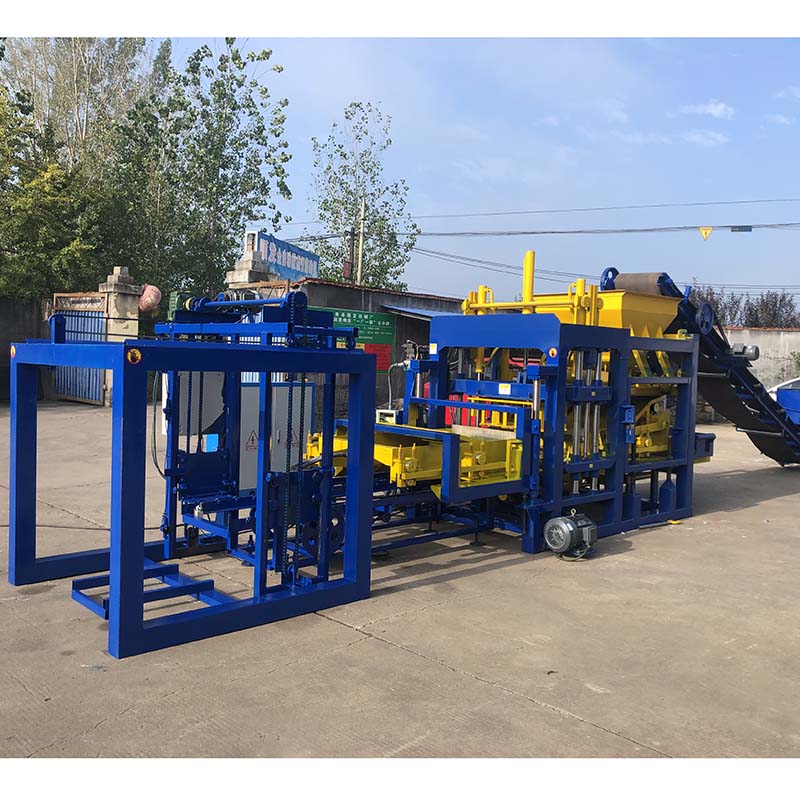
The construction industry has always been a critical driver of economic growth and infrastructure development.
However, traditional construction methods often involve labor-intensive processes, high material wastage, and extended project timelines.
In recent years, the advent of block making machines has ushered in a transformative era in construction, revolutionizing building techniques and offering more efficient, sustainable, and cost-effective solutions.
This essay delves into the significant impact of block making machines on the construction industry, examining how they are redefining building techniques across four key aspects: speed and efficiency, material optimization, design flexibility, and environmental sustainability.
Speed and Efficiency: Accelerating Construction Timelines
One of the most striking advantages of block making machines is their ability to accelerate construction timelines significantly.
Unlike traditional bricklaying, which involves manual labor and time-consuming processes, block making machines automate the production of building blocks, streamlining the construction process.
These machines can produce a large number of blocks in a short time, allowing builders to erect walls and structures quickly.
Moreover, the uniformity and precision of the blocks ensure smooth assembly and reduce the need for excessive on-site modifications.
As a result, construction projects can be completed in a fraction of the time compared to conventional methods.
The speed and efficiency offered by block making machines are particularly advantageous in areas facing urgent infrastructure needs, such as disaster recovery or housing projects for rapidly growing urban populations.
Material Optimization: Minimizing Waste and Costs
Traditional construction methods often lead to a significant amount of material wastage due to irregularities in brick sizes and shapes.
This not only adds to project costs but also puts unnecessary strain on natural resources.
Block making machines, on the other hand, promote material optimization by producing uniform and standardized blocks.
The manufacturing process of blocks involves the precise use of cement, sand, and other materials, ensuring minimal waste.
The ability to control the size and composition of the blocks results in a more efficient use of raw materials, leading to cost savings and reduced environmental impact.
In addition to optimizing material usage, some block making machines utilize recycled materials, such as fly ash or crushed concrete, further contributing to sustainable construction practices.
By embracing eco-friendly alternatives, builders can reduce their carbon footprint and move towards a greener approach to construction.
Design Flexibility: Enhancing Architectural Possibilities
Block making machines offer a wide range of design options, providing architects and builders with greater flexibility to bring their creative visions to life.
These machines can produce blocks of various shapes, sizes, and surface textures, enabling the construction of unique and aesthetically pleasing structures.
From curved walls to intricate facades, block making machines can cater to diverse architectural styles and designs.
Additionally, with the ability to produce specialized blocks, such as thermal or acoustic blocks, construction projects can meet specific functional requirements without compromising on aesthetics.
This design flexibility not only enhances the visual appeal of buildings but also opens up opportunities for innovation and experimentation in construction techniques.
As a result, architects can explore new horizons in sustainable and visually captivating construction designs.
Environmental Sustainability: Building for the Future
As the world grapples with the challenges posed by climate change and resource depletion, the construction industry must embrace sustainable practices.
Block making machines play a vital role in promoting environmental sustainability in construction.
By optimizing material usage, reducing waste, and incorporating recycled materials, block making machines contribute to the conservation of natural resources and a reduction in greenhouse gas emissions.
Moreover, the durability and insulating properties of the blocks enhance energy efficiency in buildings, reducing their overall environmental impact.
In some cases, block making machines can be powered by renewable energy sources, further reducing their carbon footprint.
Adopting these eco-friendly practices can not only mitigate the environmental impact of construction but also contribute to the development of greener and more resilient cities.
The introduction of block making machines has ushered in a new era of construction, revolutionizing building techniques across the industry.
From speeding up construction timelines to optimizing material usage, offering design flexibility, and promoting environmental sustainability, these machines have proved to be transformative forces in the world of construction.
As the construction industry continues to evolve, it is crucial for stakeholders to embrace the advantages of block making machines fully.
By integrating these machines into construction projects and encouraging innovation in their use, the industry can pave the way for a more efficient, sustainable, and resilient future in building and infrastructure development.
As architects, builders, and policymakers collaborate to harness the potential of block making machines, they hold the key to shaping a brighter and more sustainable future for construction worldwide.
